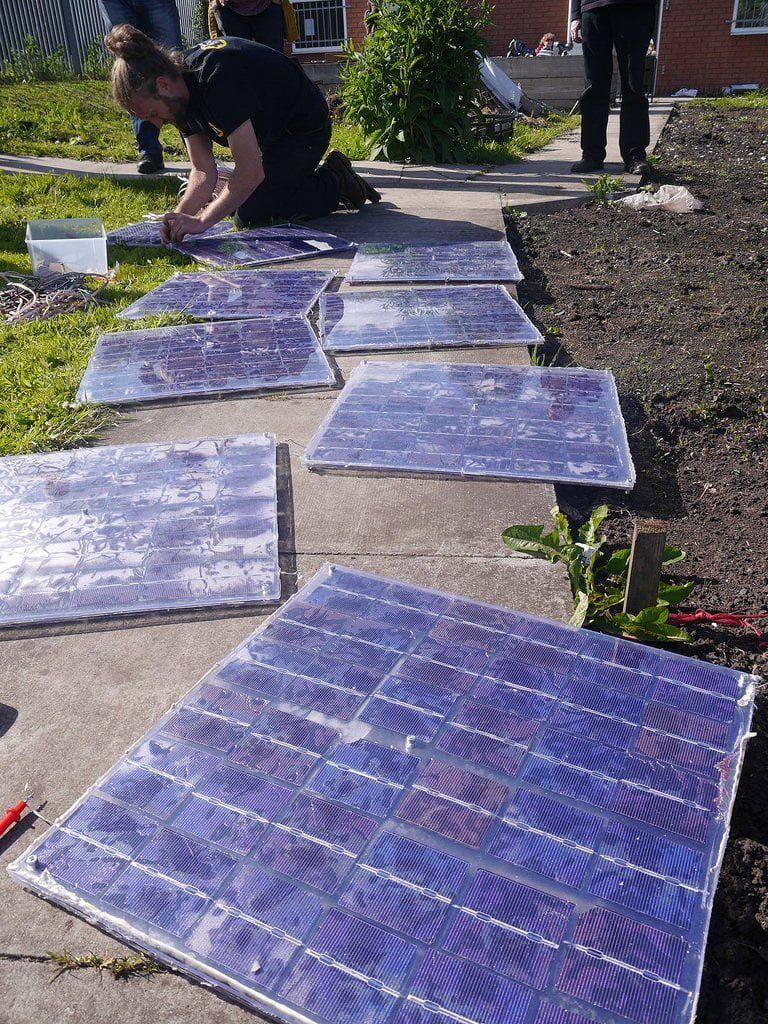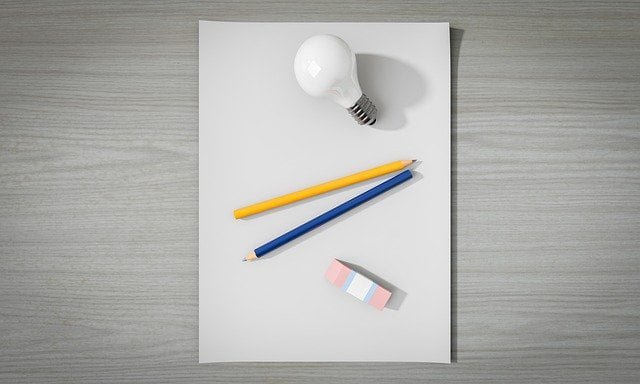You’ve decided to take the plunge into solar, and now the idea is coming to fruition. You now ask yourself, “To DIY, or not DIY: That is the question!” Can you pull off a DIY solar power system install?
For many the answer is obvious, you either lack the technical know how, lack the time to do a self-installation, or simply lack the motivation to do so.
Let’s face it, this isn’t your typical DIY project. Many factors must be considered before delving into such a complex project.
As opposed to going over the “pros and cons” of solar installation, I would rather address the considerations you will need to make before deciding to do a DIY installation.

The Basics of Solar Installation
The main reason people choose to self-install a solar power system is cost. There are many reports stating that hiring a contractor will cost 10% of the overall bill, which can equate to a few grand. However, from my research, I have found many people that have paid far more for the labor of their installation.
The reality is, if you are a handy person and have any inkling of being mechanically inclined, you can install your own system. There are a lot of warnings online to the tune of “what if you miscalculate, what if you miss a step, hookup a component incorrectly, fall off the roof… etc, etc.” These can all be circumvented with proper planning, double checking your work, and being cautious.
As the British Army adage goes, “ Proper Planning and Preparation Prevents Piss Poor Performance”. Just plan ahead, double check your work, and be careful when handling sensitive equipment, when you are on the roof, and if you are working around hot equipment and wires.
If you are not comfortable with one or more of these steps, you can always hire out for a particular step. It doesn’t mean you need to hire out the whole project! For me, working on the roof is a no-go. I don’t like heights! Therefore, I would place the call for an installer for that particular piece of the project.
Not sure where to start with your solar project? Check out my Solar Power 101 article that will help guide you.
On-Grid vs. Off-Grid
First, you need to understand the differences between on grid, off grid, and hybrid systems. You can find that information in my article about the different types of solar power systems.
An on-grid installation is actually easier to do because there are less components required (namely not having the backup battery bank and generator setup). However, there is THE MAN to deal with. For grid tied systems you will have to:
- Have an initial inspection completed. An engineer from your jurisdiction will inspect your preexisting wiring and make sure it is up to code.
- Plan out your entire system in advance. The building permit department needs to know the size of the system.
- Apply for said permits. Applications need to be sent into your utility company and local building department.
- Certified installation for the actual grid tie-in. Only a certified installer can tie your system into the grid, as doing so is highly dangerous. This you will have to contract out no matter what.
- Final inspections after installation. The inspector will come back to make sure everything is up to code.
These steps will vary in accordance to the regulations of your local jurisdiction. All the red tape and paperwork involved should be considered early in the game.
An off-grid DIY solar power system may have less regulatory process, but that all depends on the jurisdiction you live in. Some places, mainly urban areas, do not even allow residents to install their own system! Other, more rural areas do not require permitting up to a certain number of watts. The more remote you are, the more likely you are to go unnoticed. However, that doesn’t mean you shouldn’t consider the guidelines of the NEC.
The National Electrical Code guideline was designed by electrician experts, not politicians and lobbyists, to maintain a standard of safety for electrical installation. I suggest adhering to those codes to keep your property and family safe.
Now that the red tape is out of the way, lets look at the steps taken for self-installation.
The Design Process, Foundation of your System

Planning out your system schematics is the foundation of a successful DIY solar power system installation. There is a slurry of considerations to make while designing your solar system, so here is a good list to get started:
Sizing of solar panels according to your electrical usage – calculating the need of your energy is the most basic step of determining your system.
Roof (or ground) space – Once you have calculated your energy usage, you need to figure out how many panels you need and what the size of those panels are. Mono-crystalline panels can help consolidate square footage as that type of panel is more efficient. Once that is calculated, figure out if there is enough roof space to accommodate your panels. If not, you may have to install them on the ground.
Roof and panel configuration and shade – Typically, solar panels need to face south for the best sunlight, although there are instances where facing west is better, if you are grid tied, as evening is peak usage for energy. You must also consider shade. If one of your panels has shade on it, the entire system will perform at that panel’s reduced rate. Tilt of the solar panel is also another factor.
Load bearing – Once all of the above have been accounted for, you need to make sure that your roof is sturdy enough to bear the load of the panels and brackets. This is likely fine for newer homes, but older homes with shabbier roofs might need to be retrofitted to accommodate.
Climate and location– MIT researchers have discovered that climate affects energy output of solar panels more drastically than once realized. Heating and cooling can affect the output of solar panels, depending on what type of material the solar panel is composed of. You also need to consider weather and longevity of the sun in more northerly locations.
Ordering equipment – When you are choosing your equipment, you will find that many manufacturers do not distribute to retail. Therefore, your options appear to be somewhat limited. However, there are plenty of good products available through big box retailers that work just fine, such as Amazon and Home Depot. Many of these retailers sell kits that have all your components for your system. Keep in mind you will need breakers and disconnects in between most components.
Installation – This is where those handy skills come into play. Running wires, feeling comfortable on a roof, drilling holes into your home, connecting components. Installation will go smoothly if proper planning during the design process was implemented. Keep in mind some risks of installing any electrical equipment can be anywhere from power surges, burning out components, fires, and electrocution. Wires must be cut properly to avoid disasters. Being familiar with NEC standards can educate you on the best practices.
Final Approval and flipping the switch – For on-grid or regulated off grid installs, the inspector comes out for a final time and makes sure the system is worthy to be turned on. If it passes, then let the power flow!
In Conclusion
One caveat I must notate is that many of the rebates and incentives only qualify if a professional installer is hired to do the work. These incentives could make up for the extra money spent hiring the installers in the first place. Due your diligence to find out if this situation applies to you. You can check to see if you qualify for federal solar rebates at www.energy.gov.
You can absolutely do your own solar installation, even if you contract out parts of it. There are lots of components to account for and calculations to be made, but with all the resources available online, it isn’t that hard to figure out.
It really is a matter of your comfort level handling components, wiring and executing the actual install, and if you have the time to design the system and do it right.
You can always look into running smaller instances of solar on outbuilding projects and leaving the larger projects to the pros.
I am glad you took the time today to read my DIY solar power system article, and I hope that you found it useful. Please, feel free to share and leave me any questions or comments below.

My parents want to get solar panels this year. It is good to know that they will want to think about getting solar panels that will be able to work with their area’s climate. Also, it does seem like a good thing to get a professional to help them select the right solar panels.
I would say as a rule of thumb, that a professional installer is the better choice, especially if they do not have experience with electrical systems.
Great article! I think many people are wary when it comes to installing solar panels on their own, but from what I’ve heard it’s worthwhile as long as you do your research and take precautions. I didn’t install my own solar panels but my parents are looking into making the switch to solar and are leaning towards installing themselves so this was very helpful. Thanks for sharing!
I really appreciate how you were able to detail the stages and procedures involved to pull off a successful DIY solar power system install in this great article. I’m definitive that those who might want to DIY will find it overly useful. I didn’t self-install mine, I hired an expert installer for mine. Also, giving a choice right now I’ll also hire an expert. I understand that the need to save a few bucks can be compelling but then I strongly believe in letting people do what they are trained for since that means they can do it far much better. That said, I also consider these tips exceptionally useful and will definitely share with any of my friends that may want to pull off a DIY solar panel install. Kudos for the great write up.
Thank you for the words of appreciation! After we set up our own solar power system, I think for most people it would be wise to hire a professional. But we were able to research and make it happen although it was a bit nerve racking.